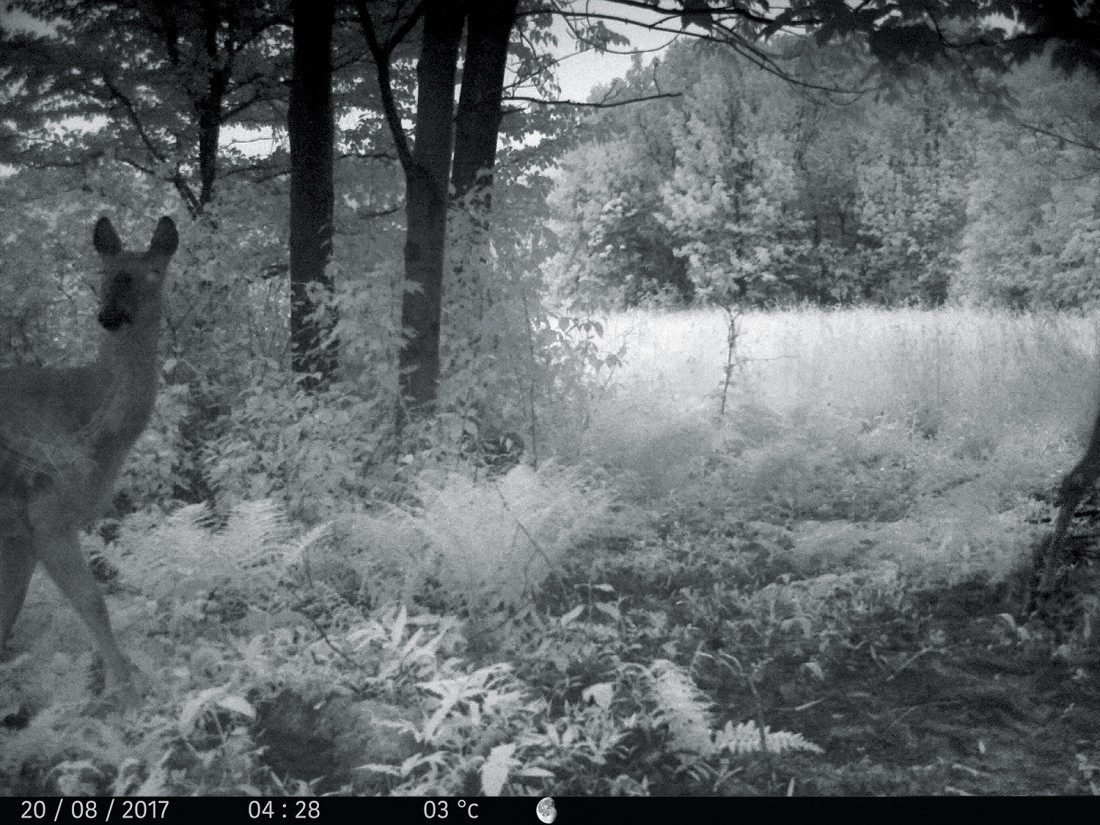Image Hunter
The Night Photographs of Éliane Excoffier
I use the kind of infrared cameras that hunters put in the forest as a way of detecting movement of game. The photos these cameras took always represented a strange universe to me, and when my boyfriend and I bought a house and moved to the Eastern Townships six years ago, I had the opportunity to use a night camera myself. There is a mix of land, fields and forest around the property, so I bought a camera and tied it around a tree. I would see animals on the land during the day, foxes and raccoons and deer, and so I wanted to capture what was going on during the night. I go out like a hunter, but I don’t hunt animals. I hunt images.
What is most interesting about this kind of photography is that I never know what I am going to get; I have no control over what I am taking and I don’t manipulate the images. I do see a connection between “Nightlife” and some of my earlier work. In 2004 I did a series of erotic photographs with a pinhole camera. There was no viewfinder and I just put a box in front of the model. I didn’t know what I was going to find on the photo. I like the happy accidents that come about through this kind of photography; what pleases me is the surprise of a photo that I don’t actually control.

Éliane Excoffier, from the “Nightlife” series, 2018, gelatin silver print, 14 x 11 inches. Images courtesy the artist and Galerie Simon Blais, Montreal.
The accidents can be wonderful. At one point I had placed a camera in the paddock on the property, and in one of the images you see a horse and on the animal’s body are leaves and branches that have been projected from the lights of a passing car. Whatever turns up is there only because of the light of the car. In the photo of two foxes I admit to performing a delicate manipulation. Because I don’t change the location of the cameras, I always have the same background, so I was able to take the white fox that was like a ghost and superimpose it on the fox on the other side of the image.
The camera is set to detect movement with a one-second gap between the detection and the first photograph, and then it takes five photographs. That can result in mysterious images. In one a white line stretching across the photograph is the dog leash; the dog is at one end of the leash and I’m at the other, but neither of us is in the image. What I like about this process is that it takes basic real things and evokes a completely different reading of what they are. There is another image that has a stutter of triangular shapes moving across the night landscape. It is the camera recording the movement of the wings of a single bat.
The look of the image also depends on the time the photograph is taken. You get a different look in the early morning or just before sunset when there is still a bit of light in the fields and the forest. There is an image of a deer in a white landscape, and if you look at the time code you see it was captured in August at 4:28 a.m. The little bit of available light makes the image magical. There is also a technical issue that is important to me: all those images are digital, but because I still love doing my own printing, I took the digital files and made a negative and then printed that in the darkroom.
Night conceals and then creates a new thing. I want my images to create their own narrative, and my preference is that every viewer comes up with their own story about the images. I’m not interested in telling my story. I want my photos to be an enigma. ❚

Éliane Excoffier, from the “Nightlife” series, 2018, gelatin silver print, 14 x 11 inches. Images courtesy the artist and Galerie Simon Blais, Montreal.

